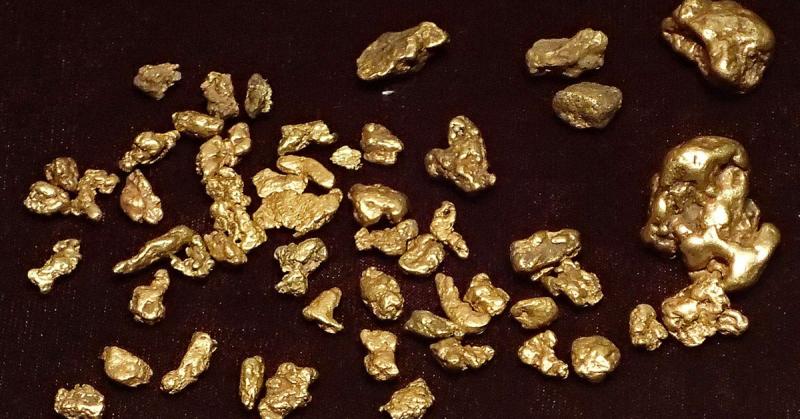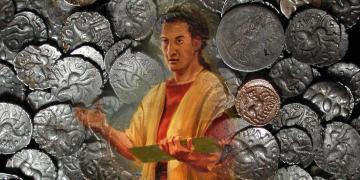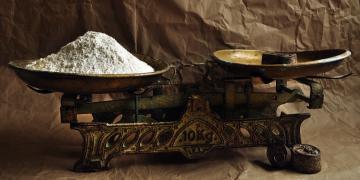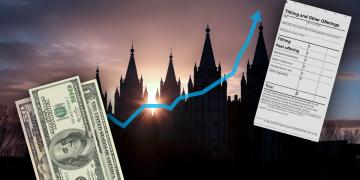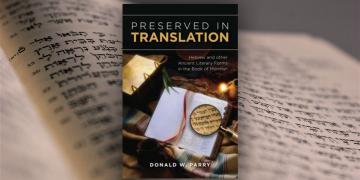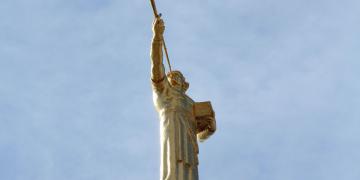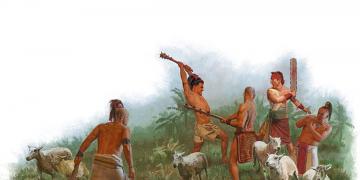You are here
Book of Mormon Central is in the process of migrating to our new Scripture Central website.
We ask for your patience during this transition. Over the coming weeks, all pages of bookofmormoncentral.org will be redirected to their corresponding page on scripturecentral.org, resulting in minimal disruption.
Alma 11 contains an intriguing story of a lawyer named Zeezrom and his contention with Amulek and Alma. However, this chapter starts off with a seemingly confusing and misplaced list of the Nephite monetary system. With names like antion, senine, ezrom, onti, readers may wonder why this list exists at all.
Mormon’s explanation of the Nephite monetary system might illuminate several points of interest for readers. First of all, knowing the value of Nephite money, helps the reader appreciate enormity of Zeezrom’s bribe to Amulek. When you realize that a judge’s daily wage was one senine of gold, you can calculate that six onties of silver would have been equivalent to 42 days of wages.
We do not know how much money a Nephite judge would have made compared to today’s standards, since modern currency systems, modern standard of living, and modern economic practices are vastly different from the ancient world. However, by taking the average daily wage of a U.S. citizen in 2019 ($205.76, according to the U.S. Bureau of Labor Statistics), you can estimate that 6 onties of that value would produce a total bribe of over $8,000.
Secondly, knowing the Nephite monetary system helps you discover a wordplay on the name “Zeezrom” and the monetary unit “Ezrom.” In Hebrew, the “Ze-“ prefix means “that of” or “he of.” So the name Ze-ezrom, means “He of the ezrom.” Zeezrom would be a ironically appropriate name for a character that tried to bribe a messenger of the Lord.
Thirdly, the sophistication of the Nephite system of currency is a striking evidence for the Book of Mormon. This system has remarkable similarities to ancient monetary systems we find in ancient Mesopotamia. In addition, Kirk Magleby has identified various ways that the Book of Mormon monetary system fits comfortably in an ancient American setting, based on recent archaeology.
The following post by Kirk Magleby is cross-posted from Book of Mormon Resources.
Money in Ancient America
The Book of Mormon describes an advanced market economy with:
- Chief markets Helaman 7:10
- Many merchants, lawyers, and officers 3 Nephi 6:11
- Written records that facilitated trade Mosiah 24:6
- Riches gained through trade Mosiah 24:7
- Taxes imposed by the central government Mosiah11:3, Ether 10:5
- Money as a store of value Alma 1:5, Helaman 7:5, 9:20
- Precious metal tokens as standardized exchange currency Alma 11:13-19
- Value of currency tokens tied to fixed measures of agricultural commodities Alma 11:7,15
- Judges paid hourly wages Alma 11:1
- Debt collection via legal process Alma 11:2
- Free trade zones over wide areas Helaman 6:8
- Forced tribute payments Mosiah 7:15
We now know that the ancient Maya had an advanced market economy with many of these same characteristics. An important article entitled "Imagining a Complex Maya Political Economy: Counting Tokens and Currencies in Image, Text and the Archaeological Record" by David A. Freidel, Marilyn A. Masson, & Michelle Rich was published in Cambridge Archaeological Journal, Volume 27, Issue 1 (February, 2017) pp. 29-54. The article discusses a number of points interesting to serious students of the Nephite text. The number in aqua at the end of each point indicates which Book of Mormon characteristic from the list above it resembles or corroborates.
- P. 29 Accounting practices have a long history of use in ancient Mesoamerica. 3
- P. 29 Currencies have a long history of use in ancient Mesoamerica. 6
- P. 29 Some Mesoamericans were literate and numerate. 3
- P. 29 Mesoamerican socieites had authorities. 2
- P. 29 Potential accounting devices (counting sticks and tokens) have been discovered.
- P. 29 Standardized objects made from marine shells were likely used as money. 6
- P. 29 Tribute payments were widespread throughout Mesoamerica 12
- P. 29 It is now understood that the Maya had marketplaces 1
- P. 29 The Maya used currencies as media of exchange 7
- P. 29 References to ancient Maya merchants have been identified 2
- P. 29 Trade zones were extensive 11
- P. 30 The Maya used currency to measure debt 10
- P. 30 The Maya employed scribal accountants 2
- P. 30 In the Maya monetary system, tokens represented key commodities 8
- P. 31 Marine shells, cacao beans, and woven cloth all served as currencies 6
- P. 32 Book keepers recorded numbers on written leaves, tally scrolls, or books 3
- P. 32 Shells carved to look like cacao beans represented the real commodity 8
- P. 33 Exchanges included vessels filled with corn tamales 8
- P. 37 Artistic portrayals depict writing tablet and stylus combinations in transactional contexts 3
- P. 42 Units of money had standardized values 7
- P. 42 Metal bells and axes were used as money 7
- P. 44 Effigies depict conspicuous displays of wealth 4
- P. 45 40,000 cacao beans was a large tribute payment 12
- P. 47 Greenstone and metal were both used as money 7
Anthropologists have discovered analogues in the ancient Maya world for ten of the twelve market characteristics described in the Nephite text.
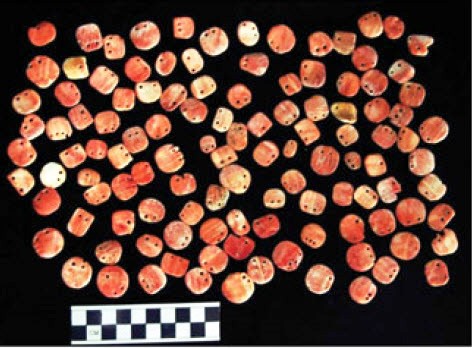
Carved Shell Tokens from El Perú-Waká Burial 37. Photo by Juan Carlos Meléndez
Objects known to have been used as stores of value and currencies for exchange among the ancient Maya:

Cacao Beans, Copper Bells, Carved Shell Beads
A scene depicting commerce or tribute and bookkeeping:
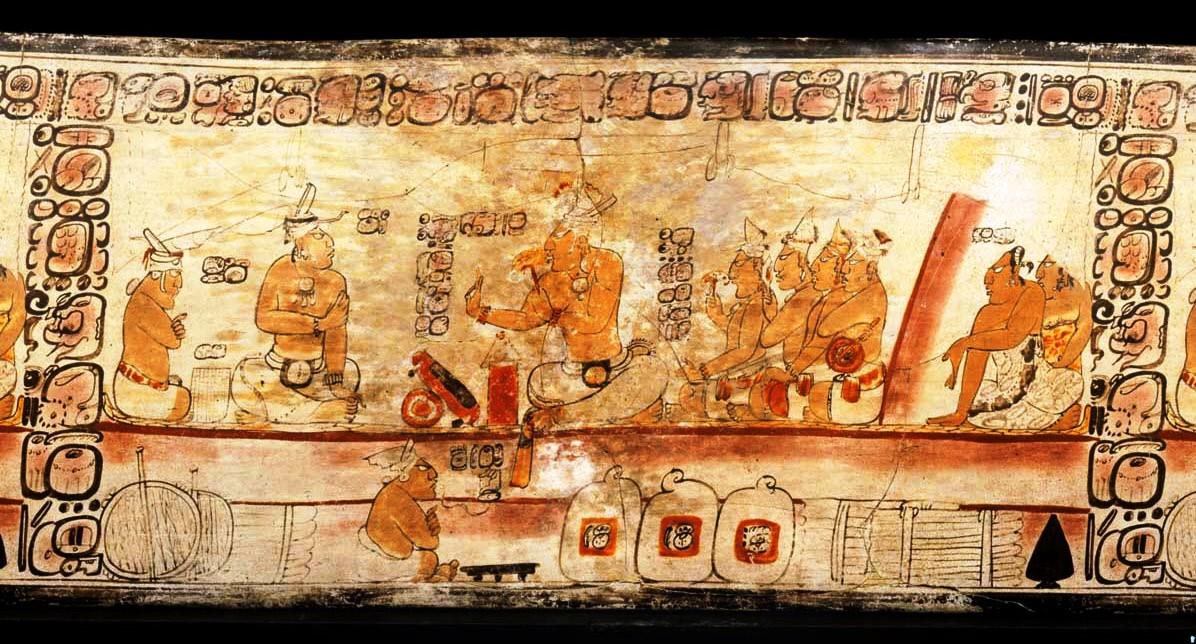
K2914 Photograph by Justin Kerr
Another scene depicting commerce or tribute and bookkeeping:

K625 Photograph by Justin Kerr
This is the famous depiction of God L, patron deity of merchants, at Cacaxtla.
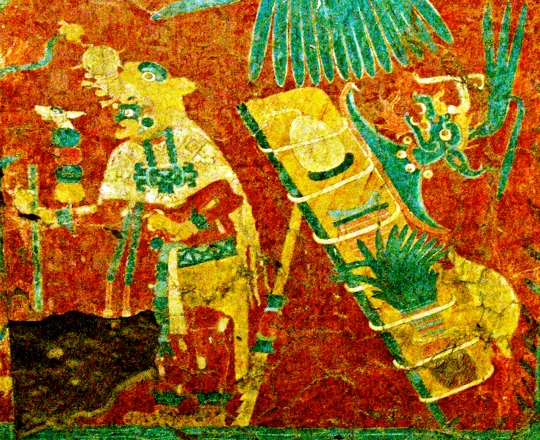
The Figure's Backrack, Held up by a Pole, is Full of Trade Goods. Photo by Kirk Magleby, January 29, 2020
This from the Tarlton Law Library, UT Austin, Article entitled "Maya Property and Commercial Law:" The Maya did have a currency system, and used cacao beans, gold, copper bells, jade, and oyster shell beads as forms of money.
The use of marine shells as currency has considerable time depth in Mesoamerica. Richard Hansen in October, 2015 said sea shells were being used as money as early as 1,000 - 800 BC in the Mirador Basin. He further said sea shells as a form of currency show up in Cahal Pech, Belize during this same time period. See the blog article "Hansen and Coe."
The precontact Achi Maya at Rabinal used cacao beans as a medium of exchange as well as "q'ana pwaq" meaning "yellow money" or gold, and "saki pwaq" meaning "white money" or silver. Rabinal Achi: A Mayan Drama of War and Sacrifice, translated by Dennis Tedlock (New York: Oxford University Press, 2003) pp. 49, 295.
Some have suggested that the Ilmenite iron ore beads depicted in the blog article "Olmec Iron" may have been used as currency.
Subscribe
Get the latest updates on Book of Mormon topics and research for free


